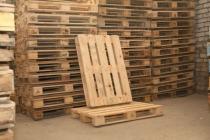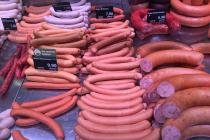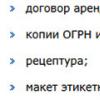If various wood waste in the form of sawdust and wood chips is easy enough to burn in long-burning boilers specially adapted for this, then the situation is different with coal fines and dust. Anyone who has ever tried to heat a stove or boiler with small fractions of coal knows that half of the fuel is wasted, waking up through the grate into the ash pan, and the other half is sintered and blocks the access of air to the furnace. Because of this, the intensity of combustion is sharply reduced. At the same time, throwing away such fuel is stupid, because it contains a lot of thermal energy. In such a situation, coal briquetting can help, which will be discussed in this article.
About coal briquetting technology
One of the ways to burn coal fines is to melt the boiler with firewood, and then pour the dusty fraction of fuel on top of the burning logs. But this is too troublesome, since coal dust must be sprinkled in small portions, which means - often.
If you load a large portion, then part of the fuel will surely spill into the ash pan and go to waste, and the rest of the fuel will fill the gaps between the wood. Air will stop flowing into the combustion zone and, as a result, the firebox will begin to fade.
The best way is to form briquettes from a fine fraction by pressing, which then burn very well, releasing a large amount of heat. Such a solution as coal briquetting was proposed at the beginning of the century before last in Russia by the inventor A.P. Veshnyakov to this day is successfully used both for industrial purposes and in everyday life. Its essence is that the compaction of coal fines with the help of high pressure on special equipment makes it possible to obtain fuel, whose calorific value no less than high-quality coals.

Deeply without going into subtleties technological process and classification of different grades of fuel, we note that such briquettes are produced in two types:
- with binders for industrial purposes;
- without binders, intended for combustion in domestic boiler plants.
Note. Briquettes pressed with binders cannot be used in everyday life. These substances, when burned, form harmful or toxic compounds that are captured in industry different ways. In the past, starches or molasses were also added to domestic fuels as binders, but this technology outdated.
Since we are interested in the technology for the production of coal briquettes without any additives for domestic purposes, it is worth considering it. So the sequence of the process is as follows:
- first, the coal undergoes a grinding operation, while a maximum fraction size of 6 mm is allowed;
- the next operation is drying in order to achieve an optimal moisture content of 15%. For this, special equipment is used for the production of coal briquettes - steam or gas dryers;
- after drying, the composition is cooled and fed for pressing. The operation takes place at a pressure of 100-150 MPa in the so-called stamp press;
- final cooling and shipment to the warehouse.
Note. The conventional process is described here, but feedstock size and moisture requirements may vary depending on the equipment used. For example, a modern mini-factory Russian company UNITEC requires particle sizes up to 0.25 mm with a moisture content of 6 to 16%. That is, in this case, the coal briquetting technology should provide for better grinding, but the pressing pressure is applied much lower.

The output is a coal briquette, whose ash content does not exceed 15-20%, the maximum allowable mechanical load is 3 kg / cm2, and when falling from a height of up to 2 m, the product loses no more than 15% of its mass as a result of impact. The heat of combustion depends on the grades of coal from which the briquette is pressed.
Production of coal briquettes at home
It is clear that industrial equipment for briquetting coal is not available to the average homeowner due to its high cost. However, even our grandfathers knew how to make briquettes without any equipment. To do this, coal dust and crumbs were mixed with water in such a ratio that a thick mass was obtained, and then cakes were manually formed from it. After drying, such products were successfully burned in a home stove. That is, contrary to the production technology, the mixture for the production of coal briquettes is not dried, but, on the contrary, is moistened.

At home, briquettes are made in 2 ways:
- using a hand press;
- on a homemade screw extruder.
The first method is good because the press machine can be purchased inexpensively or made independently. Its disadvantage is low performance to make yourself fuel briquettes for the whole season, you have to work very hard. In the second case, briquetting of coal dust occurs quite quickly, since the whole process is mechanized. But here the cost of the unit comes to the fore, even a home-made installation will require tangible costs. You will need to purchase a powerful electric motor, gearbox and other parts.

The algorithm, according to which the manufacture of coal briquettes with their own hands, is as follows:
- must try any accessible way crush the charcoal. The smaller the fraction, the better the product will turn out;
- mix the resulting composition with water. It is not possible to specify the exact proportions, since they depend on the dust content. The main thing is that the mixture is very thick and molded by hand. It is not necessary to add clay, this will only increase the ash content;
- fill the mold with the composition and activate the manual mechanism;
- remove the charcoal briquette from the mold and leave to air dry.

As a result, we get fragile products that are unsuitable for transportation, but burn well in the oven. One of the ways to briquet coal at home can be found by watching the video:
When a screw press is available, production is greatly simplified and accelerated. Turning on the electric motor, the above mixture is loaded with a shovel into the receiving hopper of the extruder. The output is "sausages" of a cylindrical shape of excellent quality. It should be noted that such coal dust briquettes have good strength, they can even be transported.

For more information about the operation of the extruder, see the video:
Conclusion
Of course, home-made briquettes are far from ideal. They have a low density and high humidity, and therefore they will give less heat than factory products. Nevertheless, they burn well in a stove or boiler, it’s not like burning coal dust that bakes into a cake. Yes, and at a cost of home-made briquettes from hard coal will cost less.
Coal briquetting technologies are designed to produce marketable products from coal dust, screenings, substandard and low-quality coal. Black or brown coals, as well as coke, can be used as raw materials.
Coal briquetting is a very old technology that has evolved with the use of double-roller roller presses to increase productivity and improve the economic viability of this business.
SAHUT-CONREUR was one of the companies that started the production of double roller presses at the beginning of the 20th century. We are located in northern France and since the beginning of the 20th century, we have installed more than 1000 briquetting plants in different parts of the world, more than 350 of them for coal briquetting.
The technology of coal briquetting on roller presses was developed for the production of briquettes from coal fines coming after coal sieves and washing. The briquettes are intended for use as fuel for private or industrial boilers in the same way as standard coal, and are also packaged for retail and in this form can be exported.
In most cases, the process of coal briquetting occurs with the addition of a binder (coal pitch, petroleum bitumen, resin, molasses and lime, lignosulfonate, starch, polymers…). In some cases, briquetting is also possible without a binder.
ADVANTAGES OF BRIQUETTED COAL
Technical solution:
- Obtaining a product of the same size, volume, shape and weight.
- Elimination of the problem of dust formation and marriage during transportation.
- Specified hardness and strength of the briquette.
- Utilization of waste into marketable products
Consumer and Marketing Benefits:
- Higher energy value
- Longer burning
- Ash in powder form
- Less CO2 and sulfur emissions
- Easier packing, transportation, warehousing
- Ready for automatic feeding into the furnace
- Possibility of packaging for the consumer market
- Export deliveries
COAL BRIQUETTING WITHOUT BINDER

The coal briquetting plant without binder consists of the following components:
The capacity of a coal briquetting plant without a binder can range from a few tons per hour to about 25 t/h.
COAL BRIQUETTING WITH BINDING

The plant for briquetting coal with a binder consists of the following sections:
- area for sorting and grinding coal, if the dimensions of the coal are too large
- drying section if the moisture content of the coal is too high
- binder addition section
- briquetting station on a two-roller press
- (optional) post-processing area (cooling, ripening and drying depending on the binder used)
The capacity of the plant for the production of briquettes from coal with a binder can be from several tons per hour to 100 t/h for large presses.
Possible binders
- coal pitch
- petroleum bitumen
- resin
- molasses and lime
- lignosulfonate
- starch
- polymers, etc.
The specific binder for coal briquettes is determined by regional availability and end product requirements. The optimal proportions of the binder and the parameters of the finished briquette are determined when testing coal in France at the Sahut-Conreur pilot plant.
Testing of raw material and binder for coal briquettes
Coal in each particular deposit has individual chemical and physical characteristics, different binders may be available in each region.
To accurately determine the required composition and characteristics of the equipment, it is necessary to conduct preliminary testing of the customer's material at the manufacturing plant of Sahut Conreur SA in France. To conduct tests, the customer needs to send coal to France for testing.
As a result of the tests it will be possible to:
- determine the required composition and characteristics of the equipment
- determine the type and proportions of the binder
- get a finished briquette and determine its characteristics
- calculate exact economic indicators production
Also, only during testing it is possible to determine whether coal is suitable for briquetting without a binder and what in this case will be the technical and economic indicators of production, as well as the quality characteristics of the briquette.
COMPARISON OF OPTIONS FOR COAL BRIKETING WITH AND WITHOUT BINDER
Briquetting of coal using a binder:
- + Suitable for any coal or lignite
- + High productivity (up to 100 t/h)
- +
- + Possibility to receive moisture-proof briquettes
- + Low cost Supplies
- - More expensive and more complex equipment, a binder is required
Briquetting coal without a binder:
- - Applicable only for certain coals
- - Drying required
- - Limited capacity (up to 25 t/h)
- - High specific energy consumption
- - High cost of consumables
- + No binder, simpler and cheaper equipment
The technology of coal briquetting without binding additives seems more attractive at first glance, but at the same time, energy costs increase significantly, productivity and quality of the briquette decreases.
After testing, it usually becomes clear that briquetting using a binder is more economically justified, even taking into account the costs of purchasing, shipping and storing these materials.
Stages of the technological process of briquetting coal and coke
Grinding of coal in a hammer mill
Grinding of coal is necessary to obtain the required homogeneous fraction, therefore, before or after drying, coal is passed through a hammer mill.
Drying coal in a dryer

Drying is necessary to reduce the moisture content of the coal before the introduction of the binder. The degree of drying depends on the used binder and technology. The final product has a moisture content of 5-10%.
Pressing crushed coal and coal dust

Pressing of coal dust and crushed coal fraction is carried out on two-roller presses that meet the requirements of the industry:
- High performance
- Low specific energy consumption
- High reliability
Our partner is the world leader in the production of this equipment, the French company "Sahut Conreur".
Post-processing (ripening) of coal briquettes

Depending on the type of coal and binder in the technology, it may be necessary to cool and hold the finished briquette in a special way for some time in special bins, during which the briquette acquires strength.
The holding time is individual and is determined at the testing stage.
If you are interested in the technology of production of coal briquettes, we will be happy to answer
Content
Affordable price compared to other types of energy carriers, no problems with the purchase, good heat transfer are the main reasons why many users prefer to use coal briquettes for heating. The price of more familiar energy carriers is constantly increasing, which forces us to look for alternative sources of heat. Coal dust is an affordable type of fuel, but its use in its pure form is unprofitable: half of the raw material falls into the ash through the bars of the grate, and the other half is sintered, which leads to clogging of the firebox.
coal briquettes
One of the options for using coal dust, which allows you to get the maximum heat out of it, is to pour the fraction on firewood, with which the boiler is pre-heated. But this is very troublesome, since it often needs to be poured in small portions. An embankment of a large amount of fine fraction will lead to the fact that it will still spill into the ash pan, turning into waste. And the part that still remains on the wood will fill the gaps between them, blocking the air circulation and provoking the attenuation of the firebox.
The way out is the production of briquettes from dust with the addition of excipients by pressing. The fine fraction processed in this way burns perfectly with high heat transfer.
More about briquetting technology
At the beginning of the last century, the Russian researcher A.P. Veshnyakov suggested pressing the fine fraction into elements of a certain shape and size, which, in terms of heat transfer, were not inferior to coal itself. The idea has found wide application both in everyday life and in industry.
 Briquettes of coal on a screening belt
Briquettes of coal on a screening belt Today, pressed coal is classified depending on the material, environmental friendliness, security, shape and type of packaging. But the two main types are:
- For production with the addition of binding components.
- For home use without additives.
It is important to know that production briquettes should not be used in everyday life. When they are burned, a large amount of toxic substances are released, for the removal of which, under production conditions, is responsible special equipment. Previously, in the manufacture of household briquettes, additives in the form of molasses or starch were used. But this technology is a thing of the past.
industrial production
Distinctive features of dust and fine coal fraction: low specific calorific value and density. But these materials are considered as cheap raw materials that allow organizing the production of coal briquettes. The products will have good density and heat dissipation at a low cost.
For the manufacture of briquettes in the factory, a special technological line is used, consisting of a crusher, dryer, press. The movement of semi-finished products between machines is provided by a belt conveyor.
Pressed coal without additives is produced in several stages:
- Grinding of raw materials to a particle size of 6 mm and smaller.
- Drying the mixture to 15% moisture using steam and gas dryers.
- Further, the dust is cooled and fed to a stamp-type press, which acts on the mixture under a pressure of 20-150 MPa (depending on which technology is used). After this processing, the finished briquettes are delivered to the warehouse finished products for storage.
The purpose of the fuel and the equipment used are the main factors affecting the size of the particles, the level of humidity and the amount of pressure under which they turn into briquettes. At the same time, the energy intensity of the finished product directly depends on the quality of raw materials. It is important to use exactly the fine fraction of anthracite, and not brown or other types of coal. For strength, the addition of mineral or organic additives is acceptable.
 Coal briquetting press
Coal briquetting press Coal briquettes can be pressed in two ways depending on what equipment for briquetting is used:
- stamp press. The heated coal mixture is filled with special molds, in which it is compressed with a force of 100-120 MPa. After cooling, the briquettes are packaged. The finished product looks like bricks or cylinders with holes, it can look like "pills" or "pillows". This method production is suitable for the production of briquettes in large quantities due to high energy and financial costs.
- extrusion machine. In this case, the plastic coal mass is pressed through the matrix by a press. Briquette screw pressing (pini-kei) of coal dust has a cylindrical shape, resembling a "sausage", with a calibrated hole in the middle. The technology is less expensive, but also less productive.
The technology for the production of briquettes for industrial use involves the addition of cement, oil-bitumen mixture, liquid glass and others. In metallurgy, the use of these substances is permitted. But it is impossible to buy coal briquettes with oil bitumen for heating a dwelling according to the requirements of the SES.
Briquetting coal at home
For coal briquetting at home industrial technology does not fit. The high price of equipment for the production of coal briquettes, large energy costs, the need to obtain huge amount permits from government agencies at times increases the cost of finished products. But for the purpose of heating a small private house, there is no need to organize large-scale production. For the manufacture of 3-4 tons of briquettes (winter stock), it is quite possible to get by with improvised means.
 Equipment for briquetting at home
Equipment for briquetting at home The easiest way, which was well known to our great-grandfathers:
- Coal dust is mixed with clay in a ratio of 10:1 with the addition of a small amount of water to form a thick mass. Clay is a safe binder that will prevent the briquettes from falling apart. It is important to thoroughly mix all the components of the mixture. For this purpose, a construction mixer is often used.
- Next, the solution is poured into molds. It can be both special containers and used inventory (old pots, buckets, boxes). If there are no containers, charcoal cakes can also be formed manually, as our ancestors did.
- After complete drying, briquetted coal can be sent for storage.
Despite the fact that, according to the production technology, the mixture is dried, during home briquette preparation, the mixture is moistened. In this case, do-it-yourself coal briquettes have the following distinctive features:
- Imperfect form.
- Different levels of humidity and, consequently, heat transfer.
- Low strength, which does not allow transporting briquettes.
 Homemade coal briquette
Homemade coal briquette But these properties do not prevent low-cost products from burning well, especially compared to sintered dust. This option is much more convenient and practical.
And if you still want to somehow automate the process, then you can follow the example of home craftsmen and independently manufacture equipment similar to production:
- Machine that allows you to make briquettes by hand. Instructions on how to make a machine are easy to find on the Internet. For manual pressing, a unit designed for home production bricks. The materials that allow welding the frame are a profile pipe and a corner of 40 * 40 mm. A receiving hopper is mounted on top. A manual mechanism for briquetting the mixture into rectangular or cylindrical products is attached to the side. Technology:
- Raw materials are crushed to the maximum. The fine fraction ensures the strength and quality of the briquette.
- Adding water will make the mixture sticky to your hands. It is permissible to add clay in a small amount in order to slightly increase the ash content of the fuel.
- Next, the mixture is poured into the bunker, from where the mold is filled. The briquette is squeezed out by pressing the lever.
- The reverse movement of the lever causes the briquette to be pushed out of the mold. It is removed and placed in the sun to dry.
- Screw press where products are briquetted by extrusion. In this case, the financial costs of assembling the machine, as well as its productivity, will be greater. You will need:
- Thick-walled steel pipe for the manufacture of the body. Inside, it is machined according to the desired screw size.
- Auger made of high strength carbon steel.
- Matrix with one or more holes of the same material.
- Electric motor with a power of 4 kW.
- Belt drive (minimum 3 belts).
- Receiving bunker.
 Technology for the production of coal briquettes without a binder
Technology for the production of coal briquettes without a binder It is better to entrust the manufacture of the body, matrix, screw to a good turner. It is important that the diameters of the pulleys provide a screw speed of no more than 200 rpm. The motor must be grounded before connecting it to the household power supply.
Production technology:
- The raw material is crushed and mixed with water.
- When the engine is on, the mixture is loaded into the bunker.
- Appearing "sausages" are cut into pieces of the desired length and laid out on a rack to dry.
It is important to know that the presence of through holes in the finished briquettes contributes to better combustion and greater heat transfer.
conclusions
According to the manufacturers of coal briquettes, the calorific value of this type solid fuel even more than other varieties. In theory this statement can be quite real in view of the fact that only when burning 1 kg of anthracite, you can get 7.7-8 kW. In terms of specific heat, firewood and wood briquettes lag far behind, releasing only 5 kW/kg.
However, an analysis of the reviews of owners of solid fuel boilers on thematic forums shows that the demand for coal dust briquettes is lower than for wood, for several reasons:
- With their help, it is difficult to melt the boiler and when burned, coal gives off little heat.
- Before and during combustion, an unpleasant odor remains in the room.
- Briquettes lose their shape, crumble heavily during transportation.
- Lots of ash.
 Combustion of coal fuel in briquettes
Combustion of coal fuel in briquettes A large number of negative reviews(about 70% of the total) can be explained by the fact that manufacturers use low quality raw materials in order to get more profit. They briquette mixture, sludge and other types of coal unsuitable for space heating, and add excess substances for the mass. Briquettes made really from anthracite are hard to find. The main feature is the rich black color of the products.
Conclusions are clear:
- It is better to make coal briquettes on your own.
- For production, it is necessary to buy high-quality raw materials.
- If it is possible to purchase only low-calorie grades of coal, pressing is not economically feasible. Although burning low-quality briquettes along with firewood will reduce heating costs.
Yes, home-made coal briquettes are very different from factory counterparts: they crumble during transportation, are wet, and give less heat. But this way you can control the quality of the raw materials used, the presence and quantity of additives. Both in the boiler and in the stove, “homemade” briquettes burn well, much better than dust, which is simply baked into the cake. In addition, for the price, home-made cylinders, bricks or "sausages" are much more profitable.














